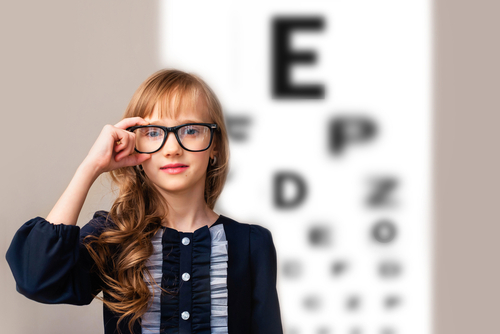
A child’s vision develops rapidly. Sight is an infant’s most vital sense in the first six months, allowing for cognitive and social skill development. Kids are primarily visual learners. According to the American Optometric Association, up to 80 percent of a child’s learning happens visually. That is why it is imperative to be proactive about your little one’s visual health.
Why Pediatric Eye Exams Need to Happen Early
Regular pediatric eye exams are the best way to keep your child’s eyes and vision healthy. Between reading, writing, seeing the board, computer work, and even playing, your child’s eyes are constantly working. Good vision means more than the ability to see clearly. Children should be able to understand and respond to what they see.
Pediatric eye exams are not just a way to determine whether children need glasses. They are about preventative care, just as regular examinations with a pediatrician are. Comprehensive pediatric eye exams can help eye doctors detect various vision-threatening conditions early.
Furthermore, myopia is one of the most pervasive vision issues in kids. About 40 percent of kids in the U.S. are nearsighted, compared to just 20 percent 30 years ago. This condition can progress without proper intervention beyond prescription eyeglasses, causing long-term effects.
When to Take Your Child for the First Eye Exam
The American Academy of Ophthalmology and the American Optometric Association recommend a comprehensive eye exam by a pediatric eye doctor by age one. Children without evident eye problems should have another exam before kindergarten.
These exams are crucial for kids who:
Have an eye problem spotted by a pediatrician
Have a parent or sibling with a significant eye problem?
Are suspected by their parents of having an eye problem.
Have a parent or sibling with myopia?
Frequency of Pediatric Eye Exams
Kids at low risk of vision problems or who are asymptomatic should have their eyes checked at least once before their fifth year. Those at risk of developing vision irregularities should have their next exam as often as their eye doctors suggest during the same age interval.
Eye care professionals recommend a comprehensive eye exam before the first grade and annual exams after that for kids aged six to eighteen without vision issues.
Happy Children Need Healthy Eyes
The sooner parents learn about their children’s vision, the better they can protect them from potential sight and eye problems. Healthy eyesight will help your child grow up with fewer risks and more opportunities.
Since vision may frequently change during childhood, regular vision and eye care are essential. Your little one should undergo regular comprehensive eye exams every year or more often if specific risk factors or problems exist or if recommended by a pediatric eye doctor. Always remember that in-school vision screenings are not enough. After all, a child with 20/20 vision can still have sight or eye problems that require treatment.
For more information on pediatric eye exams, visit Seaside Eyecare Optometry at our office in San Clemente, California. Call (949) 493-2269 to book an appointment today.






